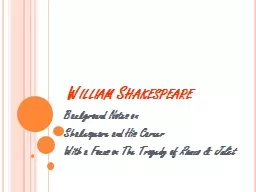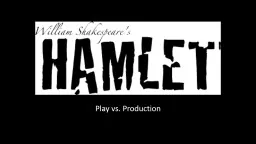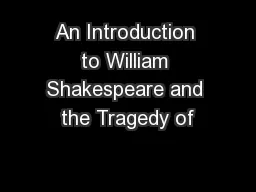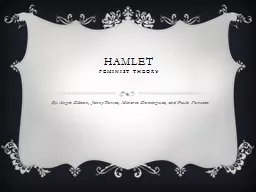PPT-Hamlet by William Shakespeare
Author : calandra-battersby | Published Date : 2020-01-09
Hamlet by William Shakespeare Hamlet is a play that has fascinated audiences and readers since it was first written in around 16011604 The play centers around Hamlets
Presentation Embed Code
Download Presentation
Download Presentation The PPT/PDF document "Hamlet by William Shakespeare" is the property of its rightful owner. Permission is granted to download and print the materials on this website for personal, non-commercial use only, and to display it on your personal computer provided you do not modify the materials and that you retain all copyright notices contained in the materials. By downloading content from our website, you accept the terms of this agreement.
Hamlet by William Shakespeare: Transcript
Download Rules Of Document
"Hamlet by William Shakespeare"The content belongs to its owner. You may download and print it for personal use, without modification, and keep all copyright notices. By downloading, you agree to these terms.
Related Documents














